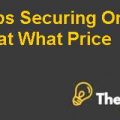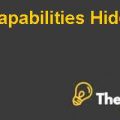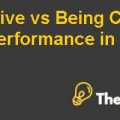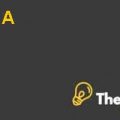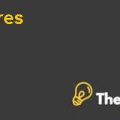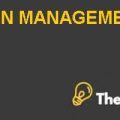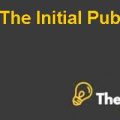Seagate Technology Buyout Case Study Solution
operating assets value. However, first of all; the enterprise value has been calculated based on the cash flow projections. To calculate the enterprise value; the weighted average cost of capital has been calculated based on the assumptions, such as: the debt value ratio that is 80%.
Besides that, other assumptions used here, are: the market risk premium that has been assumed as 6% and the risk premium, which is 7%. The terminal growth rate of 3% has been assumed based on the information regarding the industry. The working capital investment has been assumed as 25% of the sales revenues in each of the years. All the other information has been provided in the case. The weighted average cost of capital calculated based on this information is 14.40%, which is the cost of equity because the debt to value ratio for the aforementioned assumption would be 80%.
| The calculation for Cost of Capital | ||
| Assumption 2 | Risk-free rate (30 Year Government Yield) | 6.00% |
| Equity Beta | 1.2 | |
| Assumption 3 | Market Risk Premium | 7.00% |
| Cost of Equity | 14.40% | |
|
|
||
| Calculation for WACC | ||
| Assumption 1 | Cost of Debt | 80% |
| Tax rate | 34% | |
| Debt | 703 | |
| Market Equity Capitalization | 8,620 | |
| Total Capital | 9,323 | |
| D/V | 8% | |
| E/V | 92% | |
| WACC | 17.30% | |
Q3:Find the value of the disk drive business using the APV approach. The only financing effect we will consider is interesting tax shields. Assume that one billion dollars of debt will be issued for the LBO. The free cash flow will be used to pay down the debt as quickly as possible.
The buyout consists of two different staged transactions, which include a leveraged buyout of the disk drive operations and a tax-free stock swap with VERITAS. This option will benefit Seagate to address the issue its low stock value. Secondly, it will also benefit Seagate to offload shares of VERITAS, without opting for important tax liability. Furthermore, the company will take benefits from the tax shields that will arise from the payment of the company’s interest expenses. According to the cash flows; the PV value is positive, which is $427.16 million.
The disk drive industry is rigid and it is highly conducive to LBOs, which are vertically integrated. This is because the mobile system, desktop, and enterprise system manufacturers will not be depending upon any external suppliers for these technologies, as these technologies would be controlled within the organization through a complete control over the crucial enabling technologies. The disk drive industry in which Seagate has been operating, is volatile and therefore, the cash flows of the company are not stable. Seagate has a large amount of debt on its balance sheet, which is $ 704 million as compared to the competitors’ level of debt of $ 110 million and $ 236 million. Furthermore, the company would be going under vertical integration; therefore, the company would also be incurring huge capital expenses and higher research and development costs.
Conclusion:
The best option presented by Seagate’s management is the leveraged buyout of its disk drive operations based on tax-free acquisition of the company’s remaining assets by VERITAS Software Corporation. Furthermore, the company will take benefit from the tax shields that will arise from the payment of its interest expenses. On the other hand, the leverage amount used for the buyout, should be kept low as this will further decrease the company’s rating, ultimately decreasing its profitability due to an increase in its interest expenses.............
This is just a sample partial case solution. Please place the order on the website to order your own originally done case solution.

